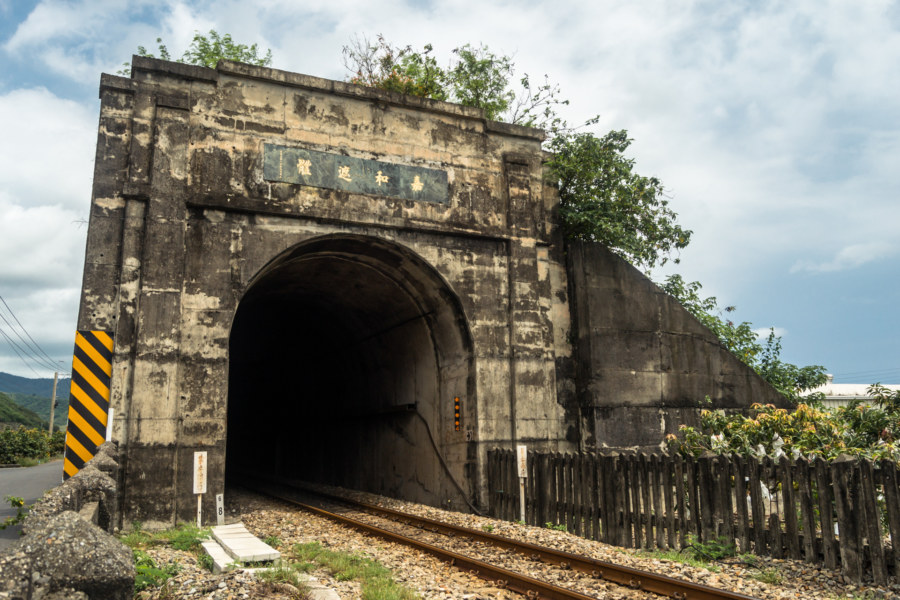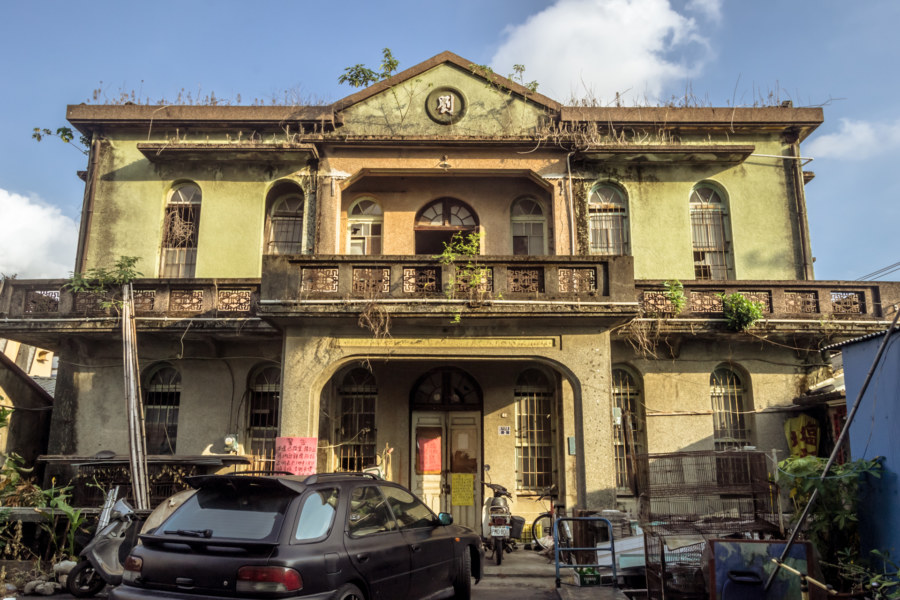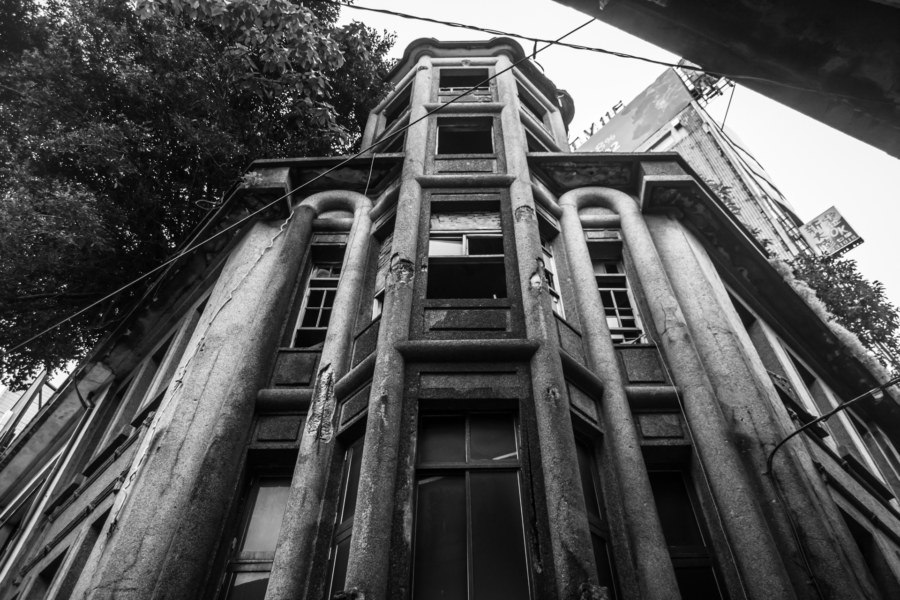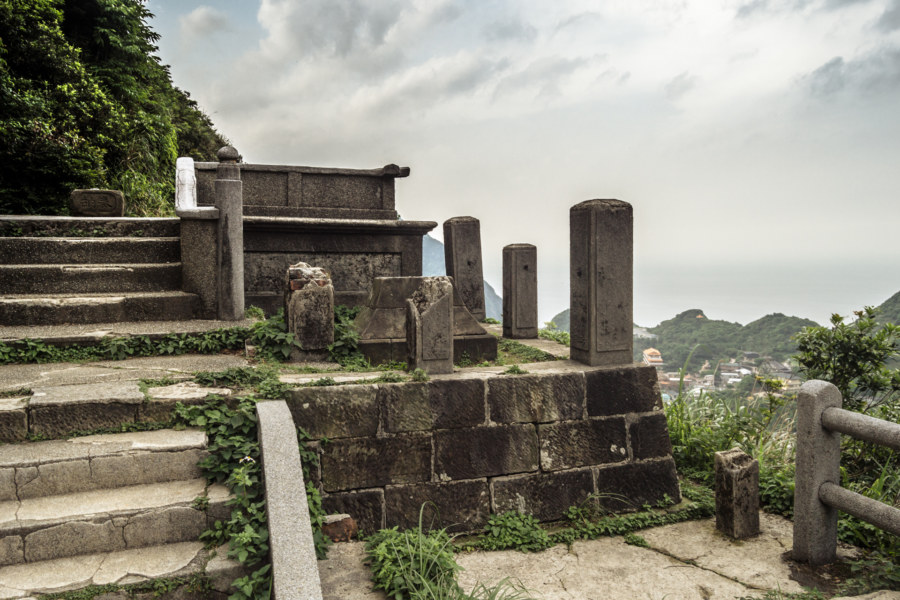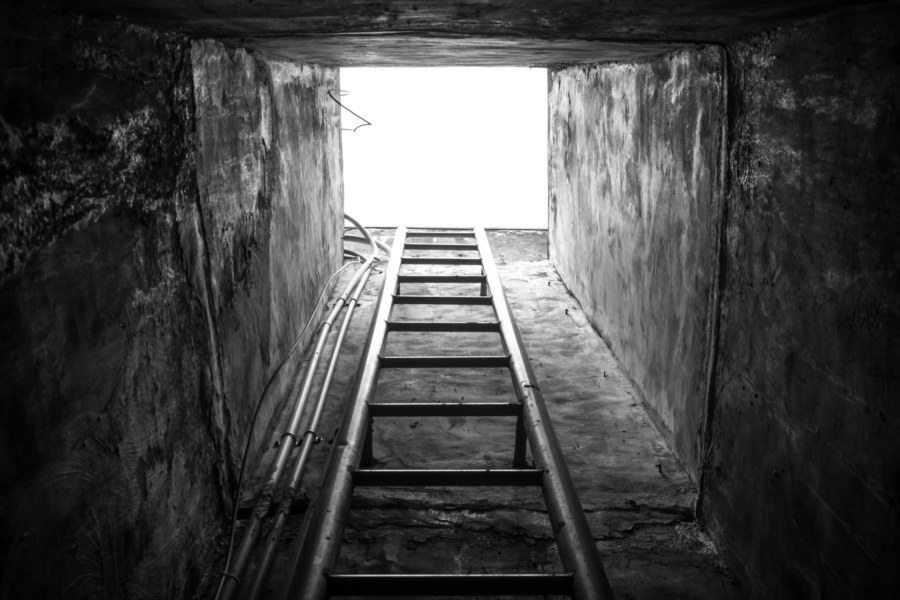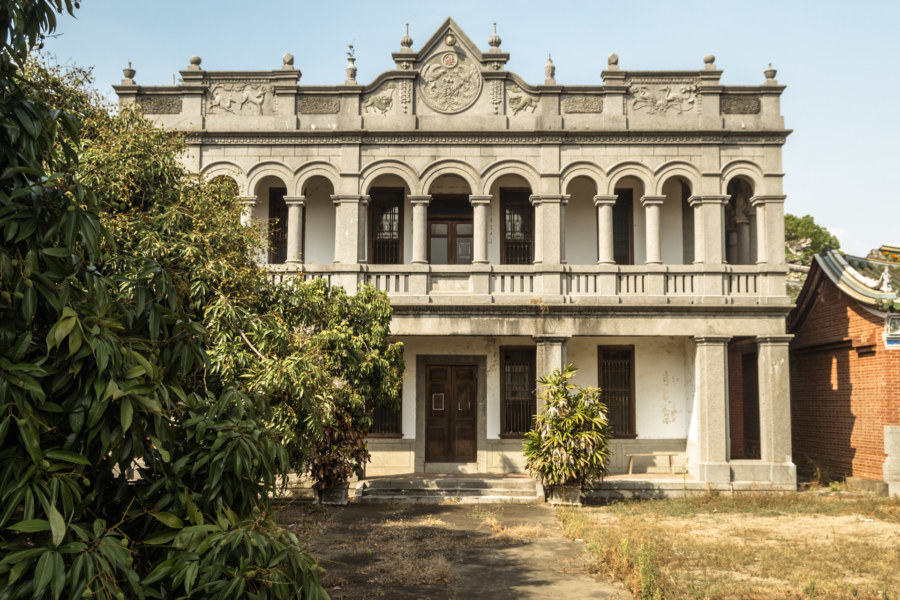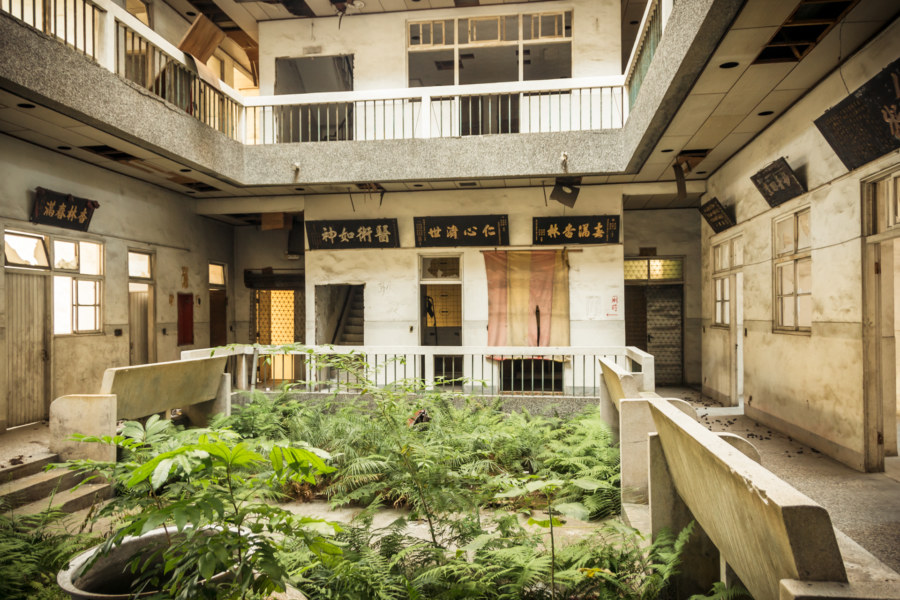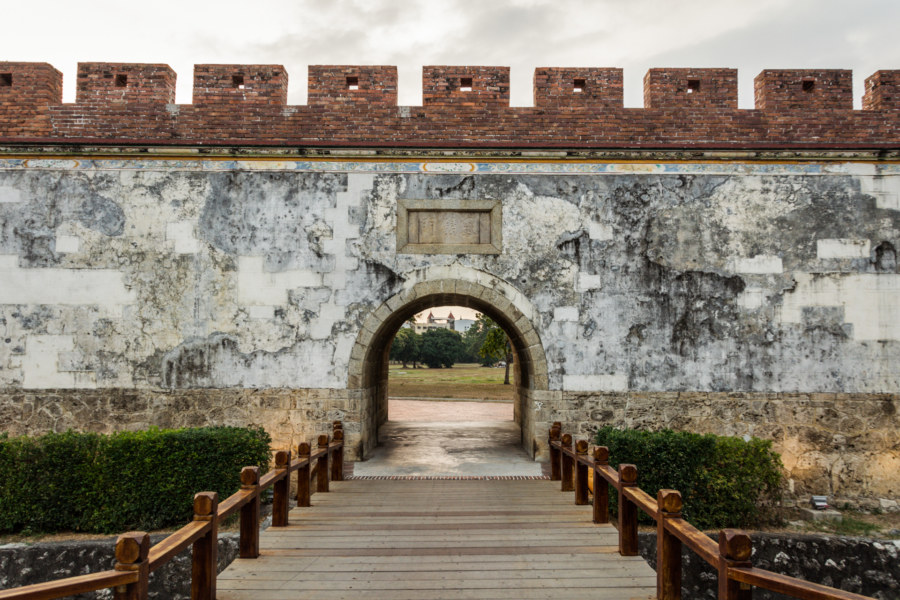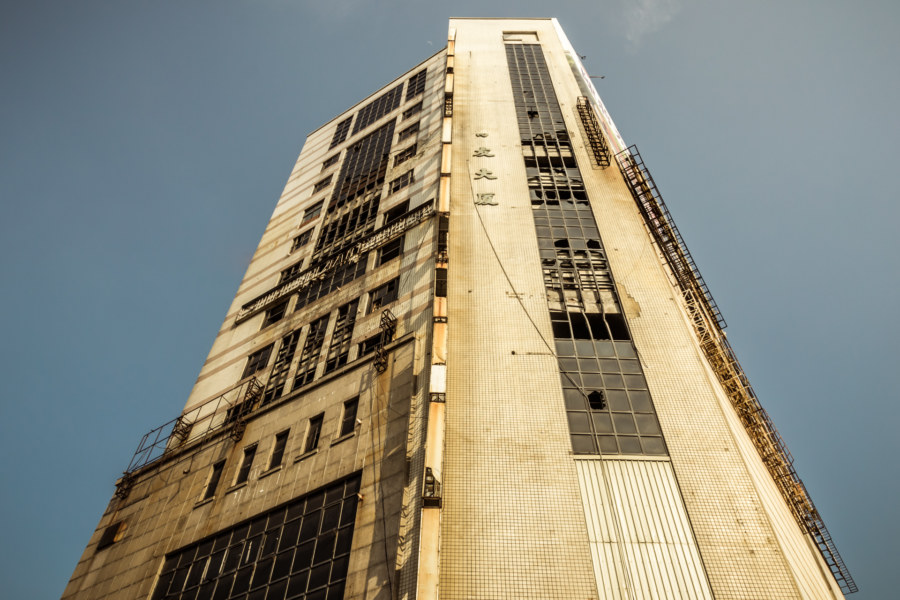Here is yet another roadside curiosity in the deep south of Taiwan: a false tunnel on the coastal plains of Fangshan, Pingtung. It doesn’t cut through any mountainside nor is it built to withstand landslides. It’s just an 1,180 meter tunnel that trains pass through for no discernible reason. I first read about this on Michael Turton’s blog and later saw it on my first round-the-island bicycle tour. More recently I took a spin around the southern loop once more, and spent a little extra time examining this concrete oddity in an attempt to divine its purpose.
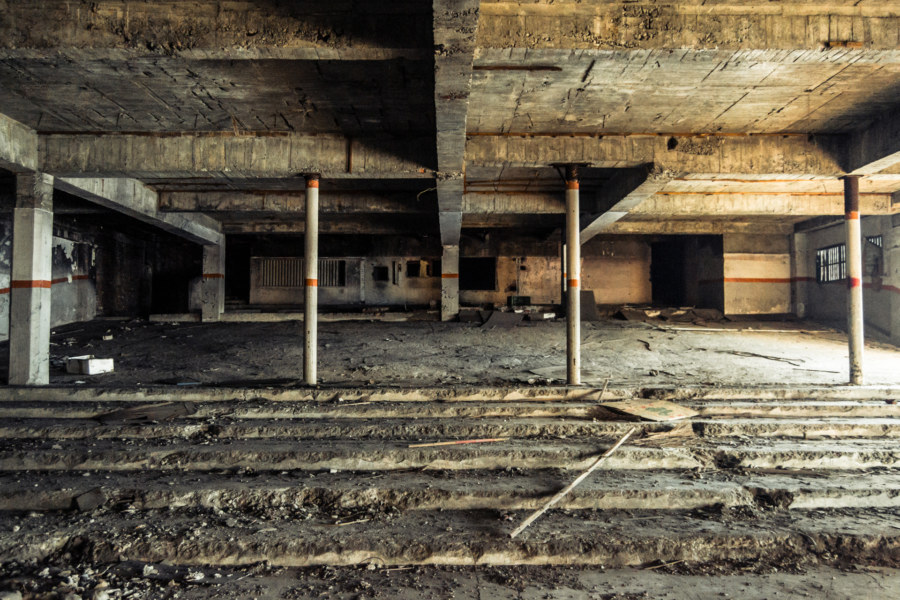
Urban exploration or urbex (Chinese: 城市探險 or 廢墟探險; Japanese: haikyo 廃墟) is the exploration of manmade structures and artificial environments, particularly those found beyond the margins of everyday society. This includes abandoned and disused spaces but also rooftops, underground infrastructure, and many other places not normally open to casual examination. Despite the name the practice is not limited to cities, nor is the focus exclusively on abandoned places. Urbex culture varies across the globe but one unifying convention most explorers adhere to is "take nothing but pictures, leave nothing but footprints".
Subterms
Xinpi Machine Gun Fort 新埤反空降機槍碉堡
While cycling through Xinpi, an otherwise ordinary expanse of rural Pingtung, I was surprised to see a sign indicating that there was a “fort” somewhere in the area. I cut loose from the main road I was following and went to go investigate. After following a bend in the river just outside a small settlement I found it: a Japanese anti-aircraft fortification dating back to the late 1930s or early 1940s. I haven’t found a formal name for this fortification so I’m going to call it the Xinpi Machine Gun Tower 新埤反空降機槍碉堡 until I hear of something better.
Chaozhou Liu House 潮州劉厝
I noticed this old-fashioned western-style mansion on the outskirts of Chaozhou in Pingtung while cycling through the deep south of Taiwan in 2015. In a sea of ugly metal shacks and bland concrete apartment blocks it is a rare pleasure to encounter a building like this one. I also enjoy the challenge of trying to learn something of the history of such places. Usually with some knowledge of the local area and the family name on the facade I can piece something together from blogs and government records—but this time I’m stumped, and I’m not the only one. Just about all that is known for certain is the name, Liu House 劉厝, which came up in some real estate records. Based on my growing familiarity with Japanese colonial era architecture I would guess this mansion dates back to the 1930s or so.
Keelung Ghost House 基隆鬼屋
Keelung Ghost House 基隆鬼屋, formally the Línkāiqún Mansion 林開群洋樓 (and sometimes Keelung Lin Residence 基隆林宅), is one of the most famous ruins in Taiwan. Much like Minxiong Ghost House 民雄鬼屋 and Xinglin General Hospital 杏林綜合醫院, it commonly appears on lists of the most haunted places on the island. This ghostly reputation makes it difficult to separate credible information from the many tall tales that are told, particularly through the dark glass of machine translation.
Ogon Shrine 黄金神社
The Ōgon Shrine 黄金神社 (also known as the Gold Temple) is an abandoned Shinto shrine in the mountains above Jīnguāshí 金瓜石, an old gold mining town in Ruifang, Taiwan. Built in 1933 by the Nippon Mining Company while Taiwan was under Japanese rule, it was mostly destroyed in the post-war era by vandals. Even so, it’s in better shape than almost every other Shinto shrine in Taiwan apart from the Taoyuan Martyrs’ Shrine 桃園忠烈祠 and Kagi Shrine 嘉義神社 in Chiayi City. The incoming KMT government went to great lengths to expunge the island of Japanese influences.
Qiaoyou Building Supplemental
Recently I posted my full exploration of the Qiaoyou Building 喬友大廈, a towering ruin in the heart of Changhua City. It was a big building and I ended up capturing many more photographs than I ended up sharing there. Here, in this post, I’d like to share a few more photos I captured in black and white. I have also included a couple of images demonstrating how I digitally restore photographic negatives I find in the ruins (a technique discussed in more detail here). If you’re curious about this building be sure to see the original post.
Yumei Hall 玉美堂
Yùměi Hall 玉美堂, also known as known as Hóng Family Mansion 洪氏洋樓, is located in Jiālǎo Village 茄荖村, a small settlement on the eastern edge of Fenyuan in Changhua, Taiwan. Built in the late 1920s when the village was administered as part of Caotun in Nantou, it is one of only a handful of “Western-style” country manors built in central Taiwan during the Japanese colonial period (see my post about Jùkuíjū 聚奎居 for another great example).
Xinglin General Hospital 杏林綜合醫院
Xìnglín General Hospital 杏林綜合醫院 is perhaps the most famous ruin in downtown Tainan, Taiwan. It opened for business in 1975 as the largest hospital in the city and catered to the burgeoning middle class during the boom times of the Taiwan Economic Miracle. In 1993 the hospital shut down after being plagued by a number of scandals involving fraudulent records, medical malpractice, and allegations of wrongful death. Ongoing legal battles and fragmented ownership have left the building abandoned and neglected since then.
The Old Walled City of Zuoying 鳳山縣舊城
A month ago I embarked upon a day trip to Zuoying to check out the famous temples and pagodas of Lotus Pond 蓮池潭, one of the main tourist attractions of greater Kaohsiung. Afterwards I wandered over to have a look at the old city of Zuoying 左營舊城, originally built in 1722 by the ruling Qing Dynasty in response to the many uprisings that regularly plagued Taiwan Prefecture 臺灣府.
Qiaoyou Building 喬友大廈
I have been living next to the magnificent ruins of the Qiáoyǒu Building 喬友大廈 in Changhua City for the last several months. Not a day goes by where I’m not walking or riding by this hulking derelict, looking up and wondering about what I might find inside. I had some general idea, of course, as I already recognized the building for what it was: one of many shopping and entertainment complexes built in central Taiwan during the economic boom of the late 1970s and early 1980s. Most of these former showpiece properties have been abandoned in the decades since, usually due to some combination of mismanagement, declining fortunes, and fire damage.
